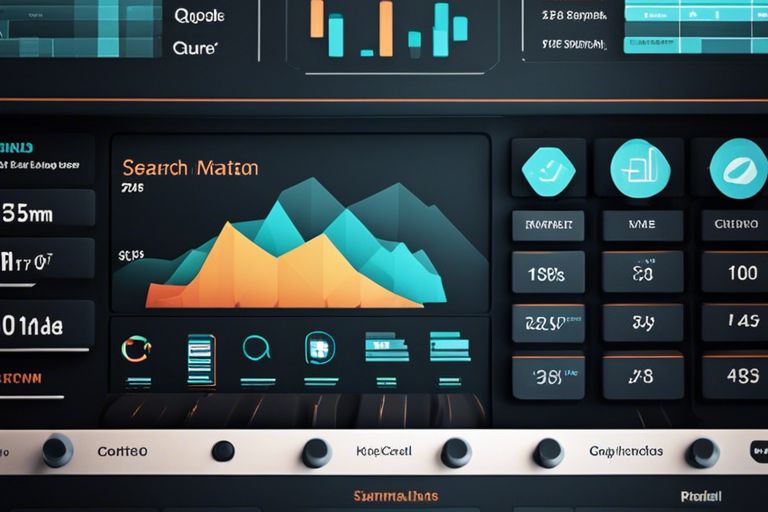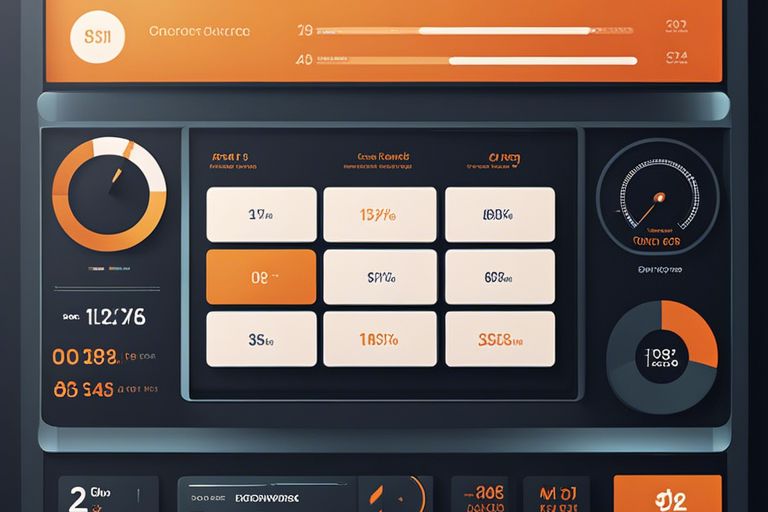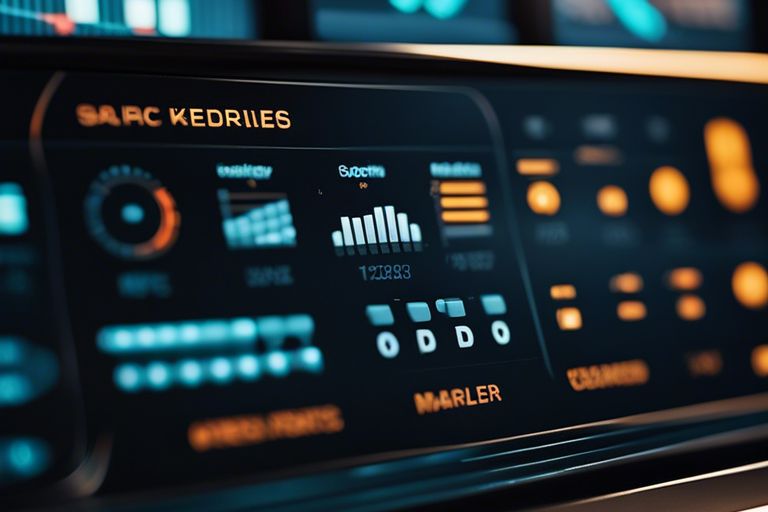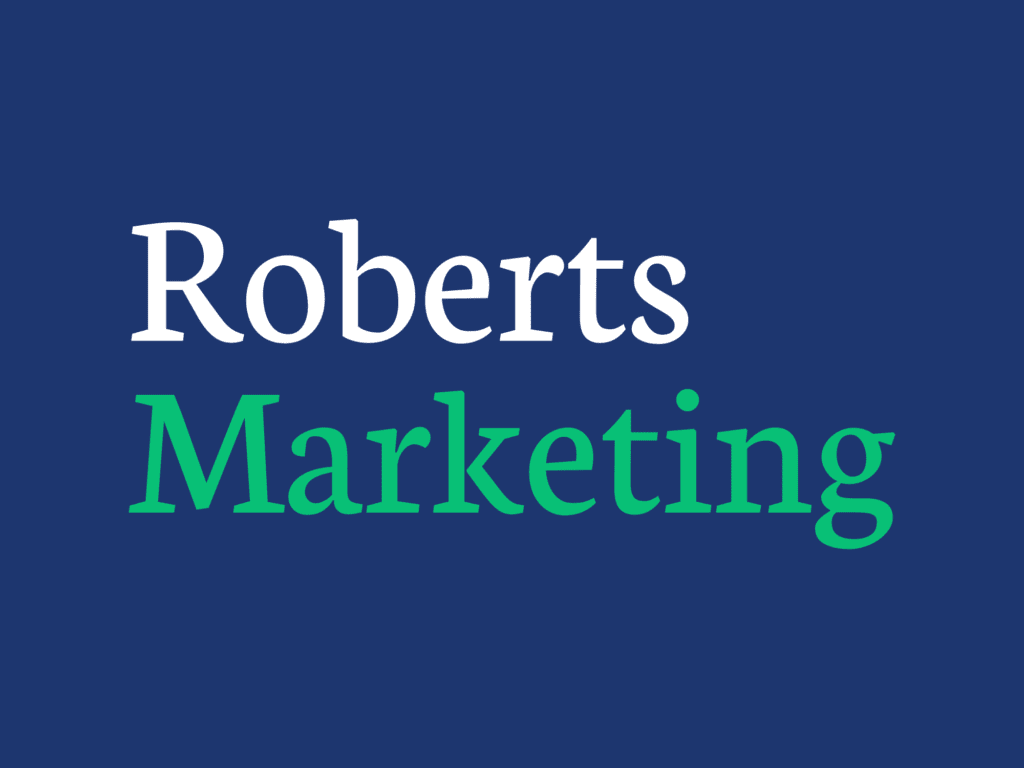As I examine into the world of Google Ads, I’ve come to realize that understanding keyword prioritization is crucial for driving performance and steering traffic where I want it. With recent updates to query matching controls, including brand inclusions and exclusions, it’s more important than ever to grasp the mechanics of keyword prioritization. In this post, I’ll explore the four priority levels that determine which of my keywords will compete in each auction, and explore how to make the most of these rules to deliver better user experiences and advertiser outcomes.
Key Takeaways:
- Keyword Prioritization Framework: Google Ads uses a prioritization framework to select which keyword to compete in each auction, ensuring keyword-to-query relevance and better user experiences and advertiser outcomes.
- Query Matching Controls: Recent updates to query matching controls, including brand inclusions and brand exclusions, help advertisers steer traffic where they want it, and understanding these controls is crucial for organizing campaigns, building keyword lists, and driving performance.
- Four Priority Levels: The four priority levels for keyword prioritization are: 1) identical exact match keywords, 2) phrase, broad match, or search themes identical to the query, 3) relevance (AI-based keyword prioritization), and 4) other relevant keywords, with each level considering factors such as Ad Rank, eligibility, and relevance to determine which keyword to prioritize.
Why Keyword Prioritization Matters
Before we examine the nitty-gritty of keyword prioritization, it’s imperative to understand why it matters in the first place. Keyword prioritization rules help ensure keyword-to-query relevance to deliver better user experiences and advertiser outcomes.
Ensuring Keyword-to-Query Relevance
One of the primary benefits of keyword prioritization is that it ensures that the most relevant keywords are matched to the search query, resulting in a better user experience and more targeted advertising.
Addressing Keyword Sculpting Techniques
Ensuring that the most relevant keywords are matched to the search query also helps address the reasons why advertisers resorted to using “keyword sculpting” techniques that entailed complex account and bid structures in order to route traffic where they wanted.
This is particularly important because keyword sculpting techniques can lead to inefficient campaign structures, wasted ad spend, and a poor user experience. By prioritizing the most relevant keywords, you can simplify your campaign structure, reduce waste, and improve overall performance.
How Keyword Prioritization Works in Google Ads
Assuming you have multiple keywords and search themes in your Google Ads account, you might wonder how the platform decides which ones to prioritize in each auction. The answer lies in the keyword prioritization framework, which has evolved significantly with recent AI advancements.
Top Priority: Identical Exact Match Keywords
Exactly matching keywords take top priority. If you have an eligible exact match keyword that is identical to the search term or spell-corrected search term, that keyword will be prioritized to enter the auction over all other keywords in the account.
2nd Priority: Phrase, Broad Match, or Search Themes That Are Identical to the Query
That being said, if you don’t have an identical exact match keyword, the system will look for phrase or broad match keywords, or Performance Max search themes that are identical to the query or spell-corrected query.
Plus, it’s vital to note that if you have duplicate search themes and phrase or broad match keywords that are identical to the query, priority will be based on Ad Rank. This means that the ad with the highest Ad Rank will be selected for the auction. Additionally, Performance Max search themes have the same prioritization as phrase and broad match keywords, so if you have an identical search theme to the query in Performance Max but not an identical keyword in Search, the search theme will be prioritized.
Understanding Identical Exact Match Keywords
Now, let’s look into the first priority level of keyword prioritization, which is crucial for mastering keyword selection. Identical exact match keywords play a vital role in Google Ads, and understanding how they work can significantly improve your campaign performance.
As I mentioned in my previous article, Mastering Keyword Selection: Insider Strategies for Google Advertising Success, identical exact match keywords are prioritized over all other keywords in the account when they match the search term or spell-corrected search term. This means that if you have an eligible exact match keyword that is identical to the search term, it will be prioritized to enter the auction over all other keywords.
Prioritization Rules
Rules dictate that the exact match keyword will match to the identical query, and it will also be prioritized over the same keyword duplicated in phrase or broad match – whether in the same or a different ad group.
Eligibility and Budget Considerations
Considerations such as budget limitations and targeting alignment can affect the eligibility of a keyword to serve. For instance, if a campaign is limited by budget, the keyword won’t always be able to trigger an ad.
Identical exact match keywords must be eligible to serve in order to match. This means that if the targeting doesn’t align, the creatives or landing pages in the ad group are all disapproved, or the keyword has low search volume status, you may see traffic go to other keywords or Performance Max. Therefore, it’s important to ensure that your keywords are eligible and budget considerations are in place to maximize campaign performance.

Exploring Phrase and Broad Match Keywords
Keep in mind that phrase and broad match keywords play a crucial role in the keyword prioritization framework. These match types can help you capture more traffic and expand your reach, but it’s vital to understand how they interact with exact match keywords and search themes.
Prioritization Rules
One key aspect to remember is that phrase and broad match keywords are prioritized after exact match keywords. If you don’t have an identical exact match keyword, the system will look for phrase or broad match keywords that are identical to the query or spell-corrected query.
Ad Rank and Duplicate Keywords
One important consideration is that if you have duplicate search themes and phrase or broad match keywords that are identical to the query, priority will be based on Ad Rank. This means that the ad with the highest Ad Rank will be selected for the auction.
A key takeaway here is that Ad Rank plays a critical role in determining which keyword or search theme is selected when there are duplicates. This is why it’s vital to optimize your ad copy, landing pages, and bid strategy to maximize your Ad Rank and increase your chances of winning the auction.

Debunking Common Misconceptions
Your understanding of keyword prioritization is crucial to navigating the latest query matching controls in Google Ads. However, there are some common misconceptions that can lead to ineffective campaign management. Let’s set the record straight.
Exact Match Keywords vs. Phrase and Broad Match
An important distinction to make is that exact match keywords don’t always trump phrase and broad match keywords. While exact match keywords are prioritized when identical to the search term, phrase and broad match keywords can still be selected if they’re identical to the query or spell-corrected query. This means that having an exact match keyword doesn’t guarantee it will be chosen over a phrase or broad match keyword.
Redundant Keywords and Match Types
Another misconception is that having duplicate keywords across match types within ad groups is necessary for coverage. However, this can lead to redundancy and inefficiency. Recognizing that the system prioritizes eligible keywords that are identical to the search term, you can dedupe and remove redundant keywords in the most restricted match types.
| Misconception | Reality |
|---|---|
| Exact match keywords are always prioritized | Phrase and broad match keywords can be selected if identical to the query |
| Duplicate keywords across match types are necessary | Redundant keywords can be removed in most restricted match types |
| Exact match keywords are cheaper than phrase or broad match | The cost is equivalent if factors are equal (ad, landing page, bid strategy) |
| Granular campaign structures are necessary for traffic control | AI-based keyword prioritization reduces the need for granular structures |
Plus, having duplicate keywords can lead to inefficiencies and make it harder to steer traffic where you want it. By understanding how keyword prioritization works, you can optimize your campaigns and ad groups to achieve better performance.
- Use search themes to fill gaps instead of duplicating keywords
- Remove redundant keywords in most restricted match types
- Optimize ad groups and campaigns for relevance and Ad Rank
- Recognizing the limitations of AI-based keyword prioritization
3rd Priority: Relevance (AI-Based Keyword Prioritization)
Despite the complexity of keyword prioritization, Google Ads has made significant strides in recent years, particularly with the introduction of AI-based keyword prioritization. This innovation has revolutionized the way keywords are selected for Search campaigns, making it more efficient and effective.
Introduction to AI-Based Prioritization
For instance, when multiple ad groups are eligible to match a query, AI-based keyword prioritization kicks in, identifying the best keywords from the most relevant ad groups. This process is crucial in determining which keyword will be selected to compete in the auction.
Determining Relevance Signals
One of the key aspects of AI-based keyword prioritization is determining relevance signals. These signals are calculated by analyzing the meaning of the search term, the meaning of all the keywords in the ad group, and the landing pages within the ad group.
Introduction to how these signals are determined is crucial in understanding how AI-based keyword prioritization works. By examining the search term, keywords, and landing pages, Google Ads can identify the most relevant ad groups and select the best keyword to match the query. This process ensures that users are directed to the most relevant content, resulting in a better user experience and improved advertiser outcomes.

How AI-Based Prioritization Works
For a better understanding of how Google Ads prioritizes keywords, it’s vital to examine into the mechanics of AI-based prioritization. This feature introduces relevance signals to identify the best keywords from the most relevant ad groups when multiple ad groups are eligible to match to a query.
Keyword Meaning and Landing Pages
Keyword meaning plays a significant role in AI-based prioritization. The system analyzes the meaning of the search term and the meaning of all the keywords in the ad group, as well as the landing pages within the ad group. This helps to determine the relevance of each keyword and ad group to the search query.
Ad Rank and Relevance
Landing page quality and Ad Rank also influence the prioritization process. Keywords with a lower Ad Rank but higher relevance can be selected over keywords with lower relevance. If more than one keyword/ad group is found to be highly relevant, the one with the highest Ad Rank will be selected.
Another important aspect to consider is that AI-based prioritization only works as well as it can infer relevance. This is why ad group theming and organization are crucial in helping the system understand the relevance of your keywords and ad groups. You can learn more about keyword and search theme prioritization within a campaign by checking out this resource.
Benefits of AI-Based Prioritization
After understanding how AI-based keyword prioritization works, it’s imperative to highlight the benefits it brings to the table. With this technology, you can simplify your campaign structures, gain more control over keyword matches, and ultimately drive better performance.
Reduced Need for Granular Campaign Structures
Benefits of AI-based prioritization include reduced complexity in campaign setup. You no longer need to create intricate campaign structures to route traffic manually, as the AI can infer relevance and prioritize keywords accordingly. This means you can focus on high-level strategy rather than getting bogged down in minute details.
Increased Control over Keyword Matches
Keyword control is another significant advantage of AI-based prioritization. With this technology, you can ensure that the most relevant keywords are matched to the search query, even if they’re not identical. This leads to better user experiences and more targeted advertising.
For instance, if you’re a skydiving instructor, you may have keywords like “skydiving lessons” and “skydiving certification” in your ad group. With AI-based prioritization, even if a user searches for “learn skydiving,” the AI can infer relevance and prioritize the most suitable keyword, ensuring that your ad is displayed to the right audience. This level of control helps you drive more conversions and maximize your ad spend.
4th Priority: Keyword Match Type and Ad Group
Many advertisers struggle to navigate the complexities of keyword match types and ad group structure, but understanding these elements is crucial for effective keyword prioritization.
Prioritization Rules
Priority-wise, the fourth and final rule considers the keyword match type and ad group when multiple keywords are eligible to match a search term. This means that if multiple keywords from different ad groups or match types could match a query, the system will prioritize the keyword with the most specific match type (e.g., exact > phrase > broad) and the ad group with the highest relevance.
Ad Group Theming and Relevance
Grouping your keywords into well-themed ad groups is imperative for effective keyword prioritization. By organizing your keywords into logical groups, you can help the system understand the relevance of each keyword to the search term.
To create effective ad groups, you should group keywords that share similar meanings, intent, or themes. This will enable the system to prioritize the most relevant keyword-ad group combinations, even when multiple keywords could match a search term. By doing so, you’ll improve the overall relevance of your ads and drive better performance.
New Query Matching Controls
Not long ago, Google Ads introduced significant updates to query matching controls, revolutionizing the way we approach keyword prioritization. As a marketer, understanding these changes is crucial to maximizing your ad campaign’s performance. For a comprehensive guide on keyword prioritization and the latest query matching controls, I recommend checking out A Guide To Keyword Prioritization & The Newest Query Matching Controls In Google Ads.
With these updates, you can now steer traffic more effectively and ensure that your keywords are matched to the right queries. Let’s probe the specifics of these new query matching controls.
Brand Inclusions and Exclusions
To give you more control over your brand presence, Google Ads has introduced brand inclusions and exclusions. These features allow you to specify which brand keywords should be included or excluded from your campaigns, ensuring that your brand messaging is consistent across all touchpoints.
Steering Traffic with Query Matching Controls
Exclusions are a powerful tool in query matching controls, enabling you to prevent specific keywords or phrases from triggering your ads. By strategically using exclusions, you can redirect traffic to more relevant keywords and improve your campaign’s overall performance.
Understanding how to leverage query matching controls effectively is key to driving better results from your Google Ads campaigns. By mastering these controls, you can ensure that your keywords are matched to the right queries, resulting in more targeted traffic and higher conversion rates. In the next section, we’ll explore more advanced strategies for optimizing your keyword prioritization and query matching controls.
Best Practices for Keyword Prioritization
Unlike many other aspects of Google Ads, keyword prioritization is not a set-it-and-forget-it task. It requires ongoing attention and optimization to ensure that your keywords are aligned with your business goals and target audience.
Organizing Campaigns and Ad Groups
Practices such as grouping similar keywords together, using clear and descriptive naming conventions, and structuring campaigns and ad groups around specific themes or product categories can help you stay organized and focused.
Building Keyword Lists and Search Themes
Lists of keywords and search themes should be built with the intention of capturing relevant queries and directing traffic to the most relevant ad groups. This requires a deep understanding of your target audience, their search behavior, and the keywords they use.
With a well-structured keyword list and search themes, you can ensure that your ads are shown to the right people at the right time, increasing the likelihood of conversions and driving better ROI. By prioritizing keywords that are most relevant to your business and target audience, you can also reduce waste and optimize your ad spend.
Common Scenarios and Considerations
All of us have been there – dealing with multiple eligible keywords, low search volume status, and disapproved creatives. In this section, we’ll probe these common scenarios and considerations to help you navigate the latest query matching controls in Google Ads.
Multiple Eligible Keywords
An important aspect to keep in mind is that when multiple keywords are eligible to match a search term, only one will be selected to compete in each auction. This is where Google’s prioritization framework comes into play, ensuring that the most relevant keyword is chosen to deliver a better user experience and advertiser outcome.
Low Search Volume Status and Disapproved Creatives
Any seasoned Google Ads user knows that low search volume status and disapproved creatives can impact keyword prioritization. If a keyword has low search volume status, it may not be eligible to serve, and traffic may be routed to other keywords or Performance Max.
Multiple factors can contribute to low search volume status, including targeting settings, budget limitations, and disapproved creatives or landing pages. To avoid this, ensure that your targeting aligns with your keywords, and regularly review your creatives and landing pages to prevent disapprovals. By doing so, you’ll increase the chances of your keywords being eligible to serve and improve overall campaign performance.
Summing up
Conclusively, mastering keyword prioritization is crucial in Google Ads to ensure that the right keywords are selected to compete in each auction. By understanding the four priority levels, including identical exact match keywords, phrase, broad match, or search themes, relevance, and AI-based keyword prioritization, you can better organize your campaigns and ad groups, build effective keyword lists, and drive performance. With the latest updates to query matching controls, including brand inclusions and exclusions, you now have more control over steering traffic where you want it. By applying these insights, I’m confident that you’ll be able to optimize your Google Ads campaigns and achieve better results.
FAQ
Q: How does Google Ads prioritize keywords and select which ones to compete in each auction?
A: Google Ads uses a prioritization framework to select which keywords to compete in each auction. The framework consists of four priority levels or rules. The first priority is given to identical exact match keywords, followed by phrase, broad match, or search themes that are identical to the query. If no identical match is found, the system looks at relevance signals to identify the best keywords from the most relevant ad groups. Finally, if multiple keywords are eligible, the one with the highest Ad Rank is selected.
Q: What are the benefits of keyword prioritization rules in Google Ads?
A: Keyword prioritization rules help ensure keyword-to-query relevance, delivering better user experiences and advertiser outcomes. They also address the reasons why advertisers resorted to using “keyword sculpting” techniques, which entailed complex account and bid structures to route traffic where they wanted. Additionally, keyword prioritization rules help reduce the need to create granular campaign structures to route traffic manually while still giving advertisers control over which keyword matches to a query using thoughtful ad group theming.
Q: How do the new query matching controls, including brand inclusions and brand exclusions, help advertisers steer traffic?
A: The new query matching controls, including brand inclusions and brand exclusions, help advertisers steer traffic by giving them more control over which keywords are selected to compete in each auction. These controls allow advertisers to specify which brand keywords they want to include or exclude, ensuring that their ads are shown to the right audience and reducing waste. By using these controls, advertisers can optimize their campaigns to achieve their desired outcomes and improve their return on investment.

